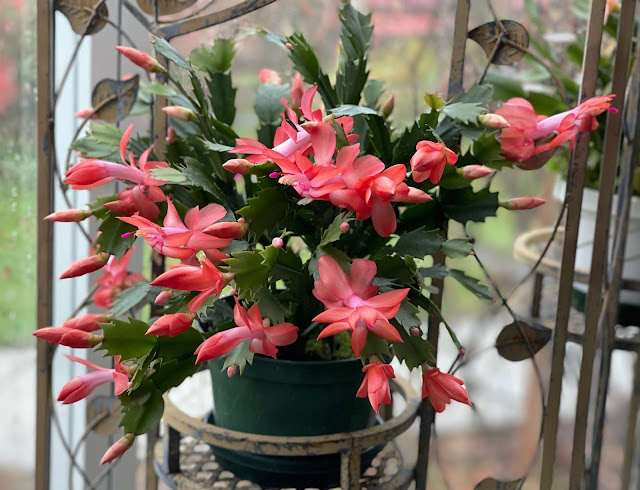I've been under the weather a bit, so haven't posted. A couple of weeks ago I pruned the fig trees by the access road. I think their last major pruning was two years ago, so they needed some shortening. These don't bear a lot, so far. I think that's the location which doesn't get a lot of sun, but they do bear some. They are good for privacy in that location.
This is Brunswick. I grew it from a cutting about 20 years ago in Vancouver, and moved it to Battle Ground about 10 years ago. It did bear a pretty good crop this year, the biggest figs of any variety I grow, possibly the sweetest, and very nice flavor. It is usually shy bearing.
This is Smith Fig. It is roughly 8 years old. The origin is Louisiana. Many have considered Smith to be one of the best tasting of all fig varieties. I agree, although this is not a prime climate for this more heat adapted, variety. So far it has been pretty shy bearing but had a great crop this year.
This is Adriatic. The figs are nice and big, but production minimal for me so far. It's only about 7 years old.
Here is the row of fig trees. It also shows a two year old Hardy Chicago and a 7 year old Champagne Fig. Hardy Chicago has always been a great bearing fig variety for me, and good tasting figs with lots of "figgy" flavor. Champagne is very mild, and so far doesn't bear well.
This pruning was fairly drastic, taking about 1/2 of the the height. They are all about 6 feet tall now, a good height to manage growth, pinch stem tips to encourage fig production, and pick figs. Deer haven't been bothering them. By trimming back, they should also have more low growth, to help with the privacy aspect. One drawback, pruning too much growth might delay production for a year. We will see.
The last photo shows tree leaf mulch too. I did not remove the dropped fig leaves. By themselves, they don't make a good mulch, because they are so fleshy they break down too fast. By adding tree leaves on top, they should stay almost weed-free for another year. The leaves also build soil humus and soil life, and manage soil water. I never water these during the hot, dry summer.














